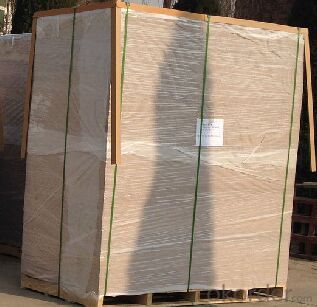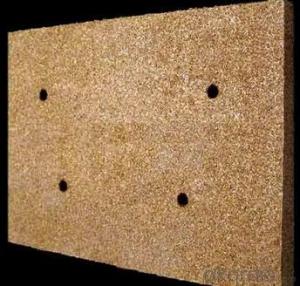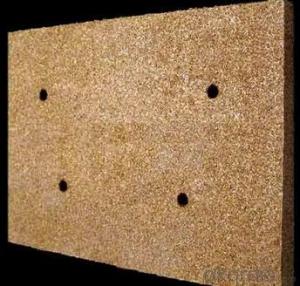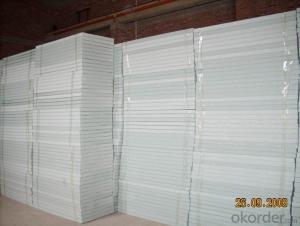thermal insulators materials vermiculite wall
- Loading Port:
- Tianjin
- Payment Terms:
- TT OR LC
- Min Order Qty:
- 1000 pc
- Supply Capability:
- 200000 pc/month
OKorder Service Pledge
OKorder Financial Service
You Might Also Like
Packaging & Delivery
| Packaging Detail: | In pallet for shipment or in carton box.OR customized vermiculite thermal insulators |
| Delivery Detail: | 15 DAYS AFTER 30% DEPOSIT |
Specifications
1. new inorganic material
2.Eco-friendly
3.Easy to cut and install
4.Fireproof
thermal insulators materials vermiculite wall
Specifications
fine fire insulation vermiculite board
size:various sizes
properties: heat-resistant,water-proofing
usage:widely use
Fine fire insulation vermiculite board
How to manufacture vermiculite board?
Vermiculite board is a kind of boards that manufactured by expanded vermiculite and a certain amout of adhensives by hot-pressing or cold pressing.
What is vermiculite board?
Vermiculite board is a kind of new inorganic material. The main raw material is vermiculite and some adhensives.
Application:
building roof insulation (weathering course)
low roof feather weight sunken filling
Building roof and wall crack free plastering protect concrete roof from thermal shocks and cracks.
vibration absorbent
water leakage arrester
bio fertilizer for plants and terrace gardening
Vermiculit board sizes
common size: 2400*1200*15-60mm 900*2100MM
Largest size: 2500*1220*100
density: 400-600KG/ M3
We can manufacture the vermiculite board referance to customers' request
- Q: i have 18, 17 day old eggs incubating and i noticed that the vermiculite was a bit dry the other day and wanted to know how would i make it a bit more damp without getting the eggs wet. when i got the vermiculite ready i made sure it was just right but over the last 17 days its got a bit dryer? . also i have noticed that some Of the eggs are larger than the others is this normal? many thanks
- it should be damp enough to make into a snow ball and not drip or fall apart, thats the way i do with mine.
- Q: Ok, my beardy finally laid her eggs, i made her do this in a seperate container and all that jazz, but the incubator i bought online is going to be another week away GRRRRWhat i want to know is whether they will be fine in the soil they are in at the moment or whether i should get a heat lamp to help keep the soil warm, or if i should put them in the vermiculite and just have it out in the open like that, or anything that will help them develop.If everything went to plan i would have been fully prepared for this but the postage got held up and i want to give them the best possible chance of surviving
- They should be fine for a week as long as you keep them warm. I wouldn't use a heat lamp because it can dry the eggs out and you risk overheating them. You could always use a heat pad hooked to a thermostat or rheostat until you get the incubator if you happen to have them. I would get the eggs in the vermiculite now so you don't have to handle them later and risk damaging them. I like to use small containers with only a few holes, if any at all. I've incubated bearded dragon eggs at temperatures of 82 to 85 degrees.
- Q: ok so i have a new lasiodora parahybana and was wondering how often i should clean her enclosure.i use a mixture of vermiculite (80%) and top-soil (20%) for the substrate.I keep it at about 70-80% humidity with the aid of a sponge and water dish.i feed it a small cricket everyday.I noticed that the tank just really stinks now.so getting to the point, how often should i clean it?i don‘t want to disturb the stress level of my spider by removing it from it‘s enclosure and wrecking her burrow to clean out cricket husks every day.so rather than, how often should i clean the enclosure, i guess i‘m really asking on how should i clean the enclosure?a lot of internet sources give me different advice.i was wondering on getting help from someone who has had a brazilian salmon pink bird eating spider and would like to pass on the knowledge.
- you get so detailed! not needed, well in my opinion. tarantulas are wonderful keeps because they are so hardy and easy to care for. ruin her burrow, shell make another, it happens. if you need to then do so. I just used some spanish moss for my ground, but you have a burrowing spider so i think sand should actually work better. and probobaly hold less smells and what not. Alls you need to do is remove the T, moving her to another tank. and replace the groundingbedding, floor, whatever you want to call it. clean out her burrow, dead cricket build up inside the tank is whats causing the smell most likely. and you dont need to feed it once a day. actually a couple crickets every couple days or so is just fine. mine hasnt eatn in a few months (by choice, ive tried feeding her, its just what they do / ) feeding less often will keep smell down hopefully because less waste.
- Q: i was wondering if anybody knows where i can get vermiculite and perlite and the cost of it...example: say a 5 poung bag of vermiculite how much would that cost?example: same thing with perlite a 5 pound bag for how much?
- The vermiculite is to help drainage. Coarse sand would do the same. I would definitely add the peat moss as this would help to retain moisture. As for soil, the M-G will work just fine. Don't know what type of soil is in your area but some of that probably wouldn't hurt either. Good Luck1
- Q: i have 2 corn snake eggs, how moist should they be?
- Leopard Gecko Egg Laying
- Q: we bought a house with a swimming pool that needs a new liner,we dont like how it drops off to 10 feet,is there anything we can do to maybe make it 7 feet?any ideas would be appreciated ,thanks
- you can refill it with sand. if the sides hold up, get a dough Boy liner, which conforms to the hole.
- Q: Can I germinate apple seeds in vermiculite?
- I don't think vermiculite would be a good substrate for several reasons. I usually buy organic peat moss.
- Q: what excatly is vermiculite?
- Mix vermiculite and water 50/50 by weight (not by volume!) to provide the proper medium in a sealed incubation container. Make sure the eggs are kept at the proper temperature. Humidity should be 90 to 100% or so, but it is very important that water never directly contact the eggs.
- Q: When I got up this morning I found my roommate sitting at the kitchen table eating what I thought was a bowl of cereal. As I began to make coffee and tell him what a drunken jerk he had been last night I recalled that we had no cereal. When I looked at the bowl I recognized that what he was eating was the vermiculite that I keep in a large Tupperware container for indoor gardening use. He had found it, assumed that it was some kind of Rice Krispy - like breakfast cereal and had put milk and tons of sugar on it. At that point he had finished most of the bowl. Being a grouchy, hung-over jerk he refused to believe me, try as i did, that it wasn't breakfast cereal and finished it. I think the stuff is pretty much inert but I'm no doctor. Should I take him to the ER? Call poison control? At this point he has gone back to bed and is snoring loudly as usual.
- dirt and compost
- Q: I am out of perlite. I need to keep humidity up as high as possible in a very small container. I am growing a plant that thrives in high humidity..anyway, what is a household alternative for perlite/hydroton rocks? Is there anything I can use to keep up humidity? Soaked paper towels? Wouldn't that be a breeding ground for bacteria? thanks
- The kitties may be altering the ph of the soil. I would have it checked. You can get a home ph tester at farm and garden and some big box stores or check with your local Ag Cooperative Extension office to see who else can do this for you. I would mix the soil really well to get a better over all test but check with the agent to see what they recommend. Vermiculite would only make the soil lighter. You want the soil to form a crumbly ball when wet. This assures the soil will both drain well but still hold enough water for the plants. good luck.
Send your message to us
thermal insulators materials vermiculite wall
- Loading Port:
- Tianjin
- Payment Terms:
- TT OR LC
- Min Order Qty:
- 1000 pc
- Supply Capability:
- 200000 pc/month
OKorder Service Pledge
OKorder Financial Service
Similar products
Hot products
Hot Searches
Related keywords




























